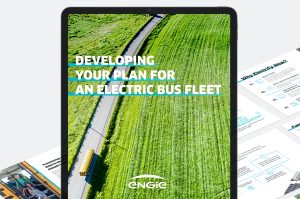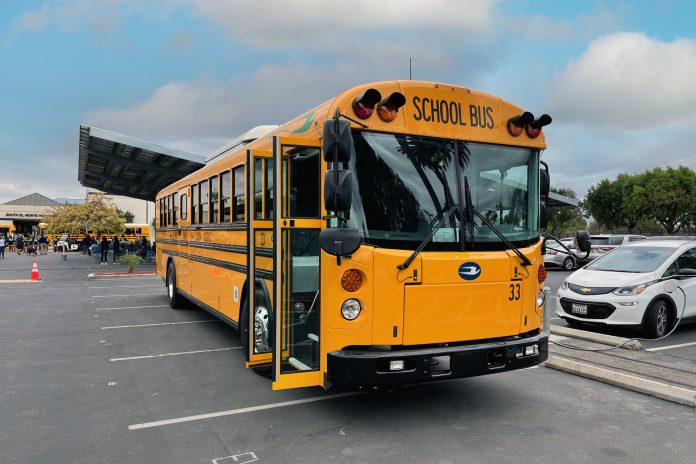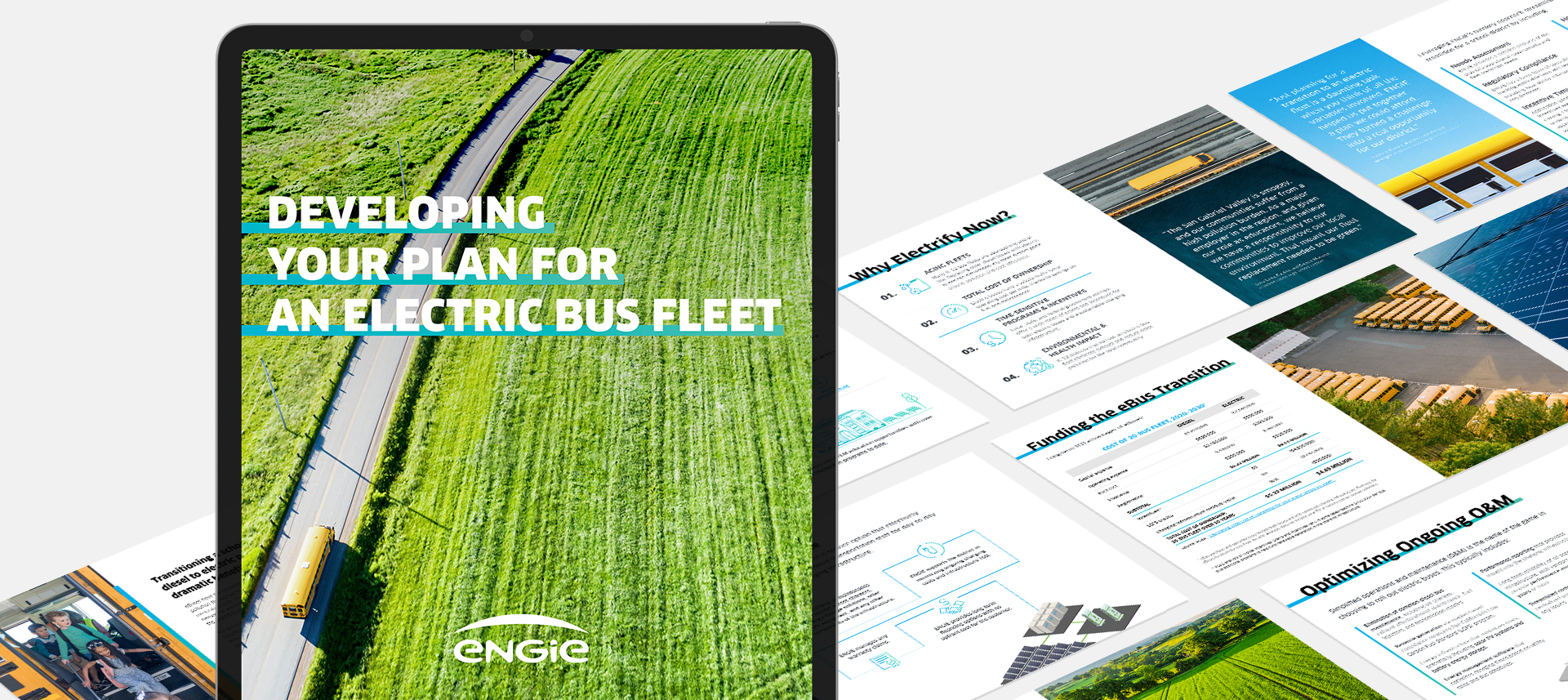As K-12 budgets continue to tighten and communities become increasingly concerned about sustainability issues, more and more school districts are evaluating green transportation options. El Monte Union High School District in Southern California’s San Gabriel Valley recently stepped forward as a leader on this front.
The district has long prioritized sustainability and conservation-oriented curricula. In 2015, it won the U.S. Department of Education Green Ribbon School District Sustainability Award, and the California Department of Education named it a “Green Achiever,” the agency’s highest level of Green Ribbon School awards.
At the local level, the district was the first school district in the San Gabriel Valley to achieve Gold Tier Status in the San Gabriel Valley Energy Champion Awards. In 2020, it extended its sustainability achievements by winning a $9.8 million Clean Mobility in Schools Pilot Project grant designed to promote zero-emission transportation options for students, parents, and staff.
ENGIE, a leading provider of sustainable energy solutions, spoke with Lena Luna, facility and energy manager for El Monte Union High School District, about her district’s transition to electric buses and the other sustainability initiatives that the grant has made possible.
Tell us a little bit about your school district.
El Monte Union High School District consists of five comprehensive high schools, an alternative high school, a community day high school, and the El Monte–Rosemead Adult School, which is one of the largest adult schools in the state. We serve more than 8,000 ninth through twelfth graders and 11,000 adults.
Our schools are located in disadvantaged communities, where a high proportion of students are English language learners or are in the free and reduced lunch program, or both. Our communities also suffer from a high pollution burden; the San Gabriel Valley is usually smoggy. That is part of the reason why the school board has prioritized sustainability in the district’s long-term vision.
We live in Los Angeles County, and the district is a major employer in our area. Our actions have a significant impact on the environment. The district has taken a stand to say that sustainability matters. District administrators and staff place a high value on making environmentally responsible choices because, in the future, our students are going to have to live with the consequences of our actions today.
How did you secure the grant to purchase electric buses?
 Our school board and district leadership first brought the Clean Mobility in Schools Pilot Project to my attention. The project is part of the California Climate Investments, a statewide initiative that puts billions of cap-and-trade dollars to work reducing greenhouse gas emissions, strengthening the economy, and improving public health and the environment, particularly in disadvantaged communities. Those characteristics made this grant seem like an excellent fit for our district.
Our school board and district leadership first brought the Clean Mobility in Schools Pilot Project to my attention. The project is part of the California Climate Investments, a statewide initiative that puts billions of cap-and-trade dollars to work reducing greenhouse gas emissions, strengthening the economy, and improving public health and the environment, particularly in disadvantaged communities. Those characteristics made this grant seem like an excellent fit for our district.
I came to the school district from the energy field, and utilized my deep energy experience and contacts to help our district succeed in this competitive grant solicitation. I wrote about 80% of the grant application and worked with a consulting firm on the remainder to make El Monte stand out in the grant application on some of the transportation-specific details.
The Clean Mobility in Schools Pilot Project was extremely competitive: only three districts across the state were awarded funds through this program. Fortunately, El Monte Union High School District was one of them.
What upgrades to the district’s transportation infrastructure did the grant enable?
The heart of the project is clean mobility. We purchased 11 all-electric school buses, a fleet of all-electric utility carts for use in maintenance at our various campuses, and three all-electric passenger vehicles that staff will share for use in district business.
We had previously installed 33 electric vehicle charging stations throughout the district as part of Southern California Edison’s Charge Ready program. Now, the Clean Mobility in Schools grant is enabling us to add 3 fast-charging stations and 11 high-power chargers for the school buses, as well as to implement battery energy storage at five sites.
The grant is also supporting an active transportation planning project that will evaluate non-vehicular travel like walkability and options for bicycle commuting.
Are there other aspects of this program that will benefit the students or communities within the district?
One of the most important elements of the project is that we are developing a clean-energy curriculum, in conjunction with Rio Hondo College, that we will integrate into the district’s standard career technical education [CTE] curriculum.
We are making a concerted outreach effort to get students involved and ensure they see what we’re doing. We have also partnered with the San Gabriel Valley Conservation Corps to employ a clean energy fellow who will demonstrate a leadership role in clean-energy construction as part of workforce development.
What’s the bottom line — the overall impact of this project on the district?
By the conclusion of the project in 2023, we will have a good understanding of the financial impact. One more deliverable of the project is a research report from the University of California–Riverside’s Bourns College of Engineering Center for Environmental Research & Technology focused on the effect of the new electric buses on our energy costs, compared with diesel buses.
The grant also requires us to calculate the degree to which we are able to reduce the district’s carbon emissions. Emitting carbon into the atmosphere has an environmental cost, and we are going to quantify the project’s overall impact on both our day-to-day operations and the state’s greenhouse gas emissions.
We will generate a final report that documents everything that happened during this project. The report will include our lessons learned, so that the California Air Resources Board (CARB) can apply our model to clean mobility programs in other school districts.
New Resource for School Bus Electrification Planning
For districts looking into their options for school bus electrification, ENGIE just released “Developing Your Plan for an Electric Bus Fleet.” This eBook is free to download and covers key benefits, challenges, and what to include in a transition plan. Learn more and download the eBook here.
About ENGIE North America (ENGIE)
ENGIE is a national energy company that works with K-12 school administrators to implement district-wide improvements and efficiency solutions. Built over nearly 50 years, our expertise ensures that school facility-and system-upgrade projects save money, enhance safety, improve assets, and protect the environment – while minimizing costs and demands on district staff time.

















